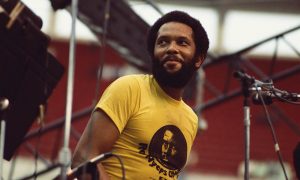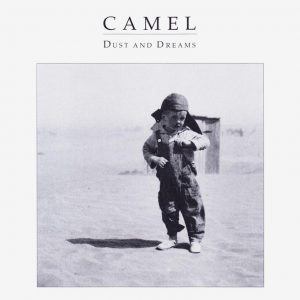It’s inevitable that B.B. King’s Live In Cook County Jail will be compared to 1965’s Live At The Regal, recorded by the same blues giant and hailed as one of the greatest live albums of all time. And yet Cook County Jail, recorded on September 10, 1970, deserves a second look, as few artists had followed Johnny Cash’s pioneering example of recording in a prison.
Listen to Live In Cook County Jail right now.
There was no greater ambassador for the blues than B.B. King. Unashamedly anchored in the past, B.B. draws deeply upon the familiarity of his audience with classic songs. As testified by countless other live recordings, King uses his skilled banter with the crowd to steer the Live In Cook County Jail repertoire on to timeless favorites, asking their permission to take such a liberty. As if it’s an apology, he explains that it’s a treat for him and the band to revisit old material that they rarely get to play. Well, no excuse necessary. It’s always a treat to hear him playing them, and the versions here are as great as ever.
There are superb performances of “Every Day I Have the Blues,” “How Blue Can You Get?,” and a wonderfully impassioned reading of “Worry, Worry.” “How Blue Can You Get?” is the great bemoaning of a relationship that King camps up hilariously, building to a fantastic, forceful crescendo, never failing to excite the crowd on “I gave you seven children, and now you want to give them back!”
He first recorded the song as “Downhearted” for his 1963 album Blues In My Heart, but it goes back to at least the 1950 recording by Chubby Kemp and the Ellingtonians. (Although, more likely, it was the version a little later by Louis Jordan and his Orchestra that made its impact on B.B., who from very early on, was one of Jordan’s biggest fans.)
B.B. is in great form on Live In Cook County Jail pitching his voice as high as he can go, and following unbelievably beautiful lyrical lines on Lucille. He sustains a soaring, hair-raising note in “How Blue Can You Get” that’s so fine it likely claimed a few scalps on the night.
He introduces “3 O’Clock Blues” as “the first tune that made people know about B.B. King” — literally… it was the first track on his debut album, Singing the Blues. A little more patter and, with the most extraordinary, scintillating, metallic, exquisite discordancy, B.B. segues into “Darlin’ You Know I Love You,” his hit single from 1952 and only his second to chart. In fact, it hit the No. 1 spot and remained in the charts for a total of 18 weeks. But, what the hell was that surreal chord he hit here, on his way into the song?
The crowd-pleasing, mid-paced “Sweet Sixteen,” which made Billboard’s No. 2 spot in 1960, rounds off this sentimental section. It’s a tune that King wrote with Joe “Josea,” one of the Bihari brothers who had first recorded him in the early 50s.
“The Thrill Is Gone” is lively, horns taking the place of the original version’s strings. It’s a fantastic change of direction in the live set towards funky soul, before B.B. does something quite audacious: he addresses his prison audience, ingratiates himself, and then ends the show with the slow ballad, “Please Accept My Love,” performing some exceptional vocal acrobatics. The band then plays B.B. out with an upbeat, anthemic instrumental to rapturous applause.
Live in Cook County Jail made the top of the Billboard R&B albums chart for three weeks in April of that year, and No. 25 on the Billboard LP chart. The celebrated Live at the Regal had been a great mid-’60s live set, powerful, and foretelling of the arrival of rock. Live in Cook County Jail was also forward-looking, though, using a heavier sound that would culminate in mid-’70s funk. In this light, they make an excellent pair of albums that showcase B.B. King at his best.




